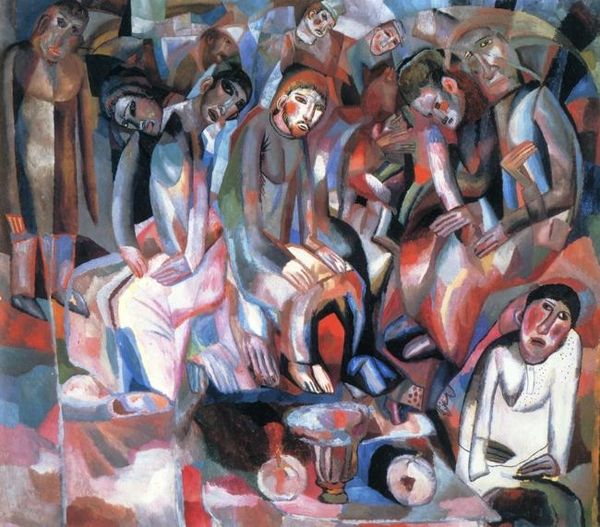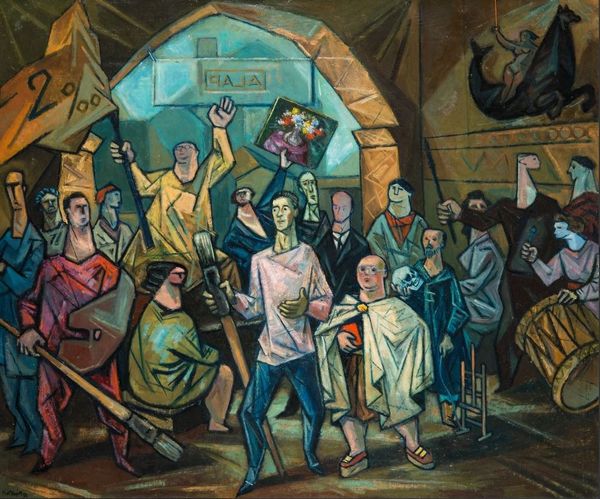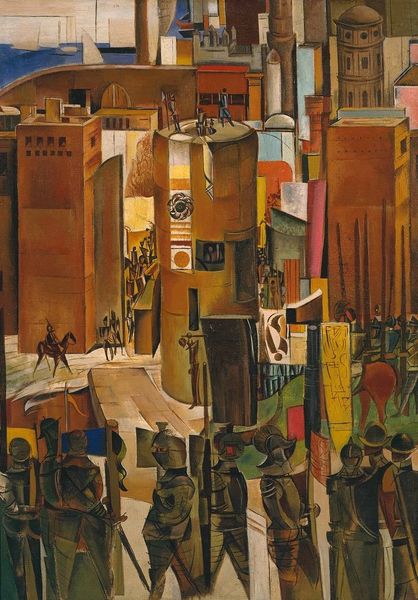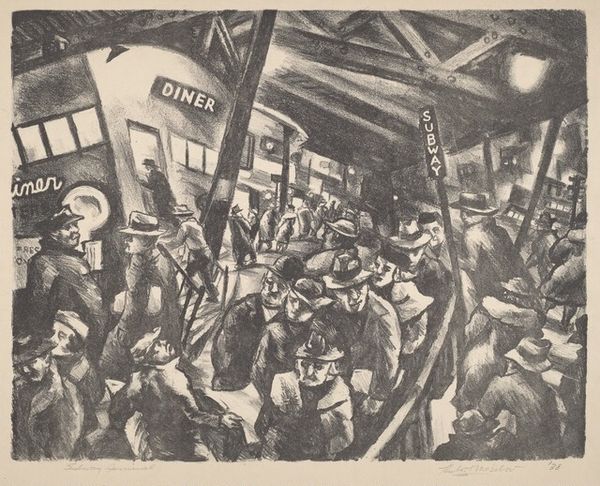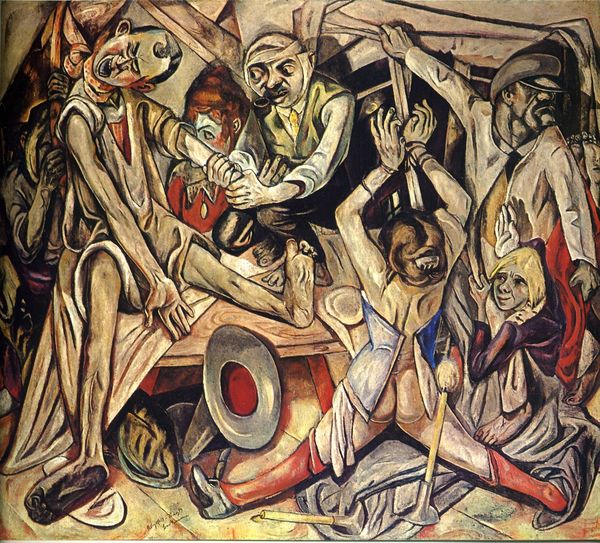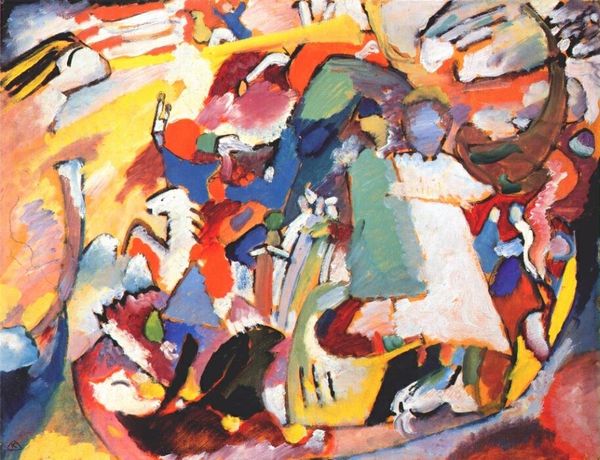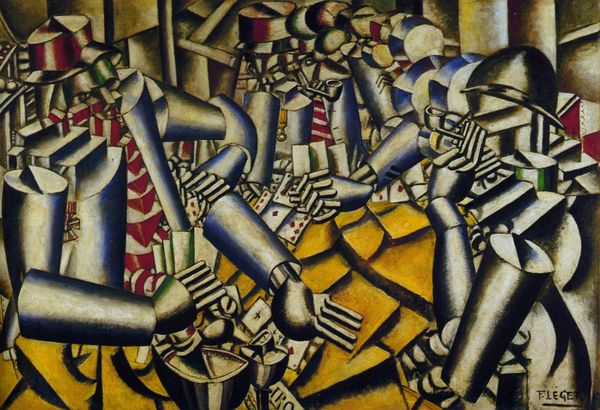
painting, watercolor
#
cubism
#
narrative-art
#
painting
#
figuration
#
watercolor
#
cityscape
#
modernism
Copyright: Public domain US
Curator: Looking at Ossip Zadkine's watercolor painting, "The Ball July 14", created in 1922, I’m immediately struck by the almost melancholic feel for what should be a joyous occasion. The faces… Editor: ...Are abstracted, almost mask-like, wouldn't you agree? And there's a somber tonality to the predominantly muted blues, grays, and browns which pervades the entire picture plane, setting up a compelling juxtaposition with the narrative’s ostensible celebratory subject matter. Curator: Indeed. Considering Zadkine's Russian Jewish background and having painted this shortly after immigrating to Paris, perhaps the distanced treatment suggests a kind of cultural assimilation… Editor: I follow. The fragmented figures, the flattened picture plane are very much indebted to Cubist visual language. What strikes me particularly is the compositional strategy here – how the figures rise organically out of each other to fill the frame edge-to-edge; it is so striking, it completely flattens pictorial space, emphasizing its two-dimensionality. Curator: The use of the French flag, of course, anchors it in a very specific time and place. Yet, the dreamlike stylization also evokes a timeless quality. Perhaps Zadkine wanted to say that the hopes of any particular era are inevitably doomed? Editor: That’s plausible given your focus on iconography. If one considers these French flags—red, white and blue vertical bands— as color fields, one grasps at once their potent and direct appeal, establishing the fundamental geometric structures, echoed in the simple blocks suggesting buildings, which underpins the entirety of Zadkine's pictorial composition. Curator: This could represent not just a specific Bastille Day celebration, but universal longing for liberation...The somber palette reflects not historical fact but emotional truth. Editor: Yes, you've brilliantly identified how Zadkine achieves symbolic and pictorial consonance—by simultaneously employing abstract strategies. The geometrical framework brings clarity, and also an air of calm control, despite its busy mise-en-scene. Curator: Considering his background, I can understand him searching to locate the psychological reality from this cultural symbolism, and express an attitude toward assimilation. Editor: Precisely. It really underlines that great art resides in how symbolic meanings mesh with structural articulation! Thank you.
Comments
No comments
Be the first to comment and join the conversation on the ultimate creative platform.

